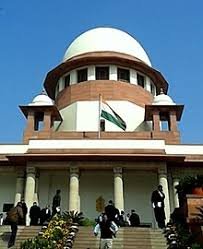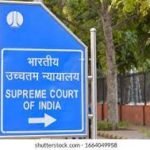The case involves two appellants seeking to overturn their concurrent convictions and life sentences for murder, upheld by the High Court of Chhattisgarh, which had overturned a third co-accused’s conviction. The Supreme Court analyzes the evidence, particularly the testimony of the victim’s mother (the sole eyewitness) and other hostile witnesses, considering legal principles regarding proof beyond reasonable doubt, the reliability of eyewitness testimony, and the treatment of hostile witnesses and seized evidence. Ultimately, the Court finds no reason to interfere with the appellants’ conviction, concluding the evidence presented proved their guilt beyond reasonable doubt.
(A) Penal Code, 1860, Section 302/ 34 – Murder – Concurrent findings – Sole eyewitness – Related witness – Interested witness – Appreciation of evidence – Held that in case of a related witness, the Court may not treat his or her testimony as inherently tainted, and needs to ensure only that the evidence is inherently reliable, probable, cogent and consistent – Do not see any reason why the mother of the victim should falsely implicate the appellants without any rhyme or reason more so when apparently there was no previous animosity of the mother with any of the appellants – PW-10 is certainly not an interested witness even though she was related to the victim and her testimony cannot be impeached on this ground – Scene of the crime was in a rural area and the witness being rustic, their evidence has to be appreciated in the light of the behavioral pattern in the rural environment – While dealing with the evidence of witnesses who are rustic, because of minor inconsistencies, the evidence should not be ignored – Held that evidence of the sole eye witness, a hapless rustic illiterate woman visited with the vicissitude and tragedy of her son being fatally assaulted by co-villagers before her own eyes, has withstood intensive cross examination and judicial scrutiny – She has answered the questions put to her during her cross examination with spontaneity without any jitteriness and her response was natural and not elusive and prevaricating, which all are signs of truthfulness of the witness –Her testimony is trustworthy and reliable – Her evidence finds corroboration from the admissible part of the evidence of the complainant, and her husband even though they had turned hostile, and the medical evidence, evidence of the Investigating Officer and other official witnesses – In the facts and circumstances as evident from the records, the Prosecution has been able to establish beyond reasonable doubt that the appellants were responsible for the death of the deceased, ‘S’ for which they were convicted by the trial court under Section 302 of the IPC – Do not see any glaring illegality or perversity in the findings arrived at the trial court and the High Court causing any grave miscarriage of justice to the appellants.
(Para 54, 55, 80, 81, 87 to 89)
(B) Penal Code, 1860, Section 302/ 34 – Murder – Nature of offence – On closely examining the injuries, it is seen that though the injuries on the head were identified as grievous, these are shown as skin deep injuries and no particular injury was identified as being the fatal one – Since the cause of death is attributed to coma because of the head injuries and it was opined that the injuries are sufficient in ordinary course of nature to cause death, it appears that it is the cumulative effect of these head injuries – He did not succumb to the injuries immediately and he died on the third day of the incident – It is also noticeable that the circumstances under which the assault took place and the reason for causing the injuries by the appellants and the motive behind their assault has not come out clearly – Even the sole eye witness, (PW-10), the mother of the deceased testified that her son was having visiting terms with the accused persons as they were residing in the same locality and she cannot tell why the quarrel occurred suddenly – It has not been established clearly that it was premeditated and the assault was preplanned with the intention to kill the deceased – Any prior enmity between the appellants and the deceased has not been established – Thus, the motive for committing the crime has not been clearly established and proved – However, it is established beyond reasonable doubt that the appellants had caused the death of the deceased fully knowing that the bodily injuries caused by the appellants were likely to cause death as the appellants were armed with deadly weapons, inclined to convert the conviction of the appellants from Section 302 IPC to Part I of Section 304 IPC – Appellants have already undergone 10 years 3 months of incarceration during the trial and pendency of the appeals before the High Court and this Court – Interest of justice will be served if the appellants are sentenced to the period already undergone by them and impose a fine of Rs.50,000/-each on the appellants, which shall be paid to the family of the deceased through his mother, namely (PW-10), failing which the appellants will undergo additional 6 (six) months simple imprisonment.
(Para 90 to 94)
(C) Penal Code, 1860, Section 302/ 34 – Appeal against conviction – Concurrent findings – Sole eyewitness – Plea of delayed recording of the statement of eye witness, PW-10 by the defence – High Court observed that the Investigating Officer (IO) was not questioned as to why there was a delay in the examination of the witness, failing which the defence cannot gain any advantage therefrom – Held that no such question was asked by the defence from the IO about the delayed recording of the statement of PW-10 – The witness was also not asked about it, which would have afforded an opportunity to the witness to explain the reason for such a delayed recording of her evidence – Hence, such a plea could not be taken now to discredit PW-10.
(Para 57 and 58)
(D) Penal Code, 1860, Section 302/ 34 – Murder – Seizure of the weapons of crime – Both the seizure witnesses have not denied their signatures on the seizure memo and admitted putting their signatures – PW-11 even goes to the extent that the police showed to them a small axe which the police said was seized from the house of the appellants – Though both the witnesses have denied having any knowledge of the actual recovery of the weapons at the instance of the appellants, their denials do not appear convincing – Held that since the IO of the case, PW-15 had proved the said seizure memos, find no reason to hold that there was no seizure that was affected merely because the two seizure witnesses had turned hostile – Even assuming that the seizure of the weapons was effected without meticulously following the procedures and thus doubtful, in the view of the medical evidence which clearly showed that the deceased died because of the injuries caused by sharp weapon which was seen by a direct eye witness (PW-10) it would not prejudice the prosecution case – It is now well settled that non recovery of the weapon of crime is not fatal to the prosecution case and is not sine qua non for conviction, if there are direct reliable witnesses.
(Para 67 to 70)
(E) Words and phrases – Expression “reasonable doubt” – It means that such doubt must be free from suppositional speculation – It must not be the result of minute emotional detailing, and the doubt must be actual and substantial and not merely vague apprehension – A reasonable doubt is not an imaginary, trivial or a merely possible doubt, but a fair doubt based upon reason and common sense – While applying this principle of proof beyond reasonable doubt the Court has to undertake a candid consideration of all the evidence in a fair and reasonable manner.
(Para 21 and 22)
(F) Criminal jurisprudence – Criminal trial – Held that the requirement of law in criminal trials is not to prove the case beyond all doubt but beyond reasonable doubt and such doubt cannot be imaginary, fanciful, trivial or merely a possible doubt but a fair doubt based on reason and common sense – Hence, if the allegations against the appellants are held proved beyond reasonable doubt, certainly conviction cannot be said to be illegal.
(Para 26)
Goverdhan & Anr. V. State Of Chhattisgarh
Supreme Court: 2025 INSC 47: (DoJ 09-01-2025)







